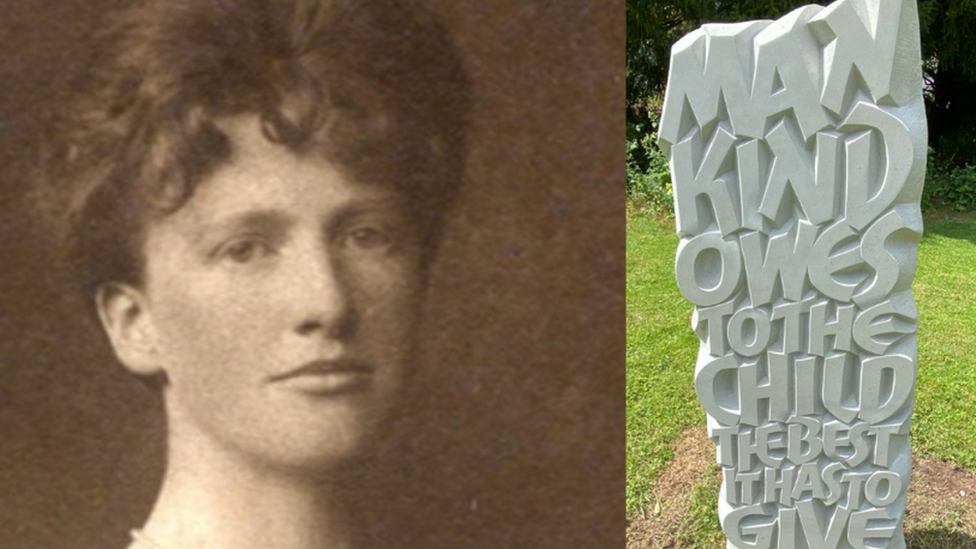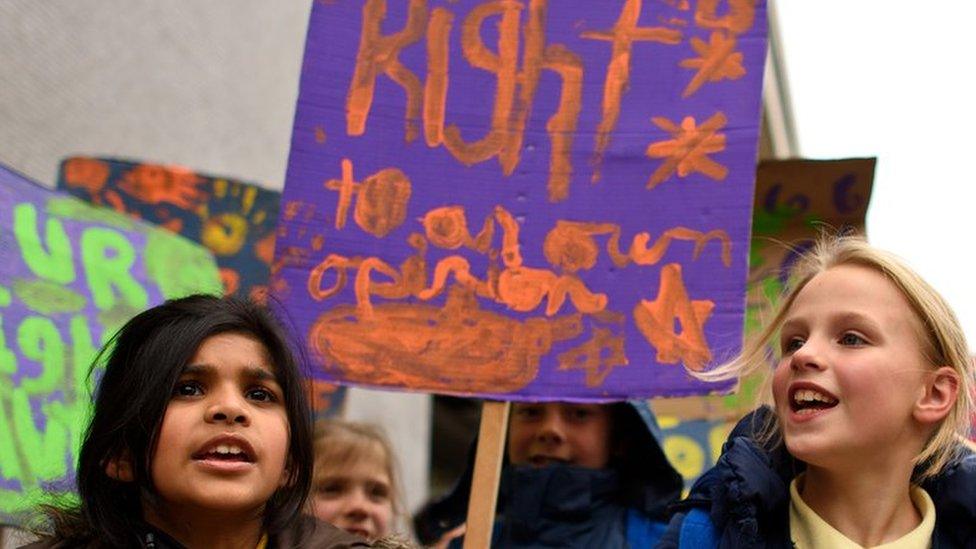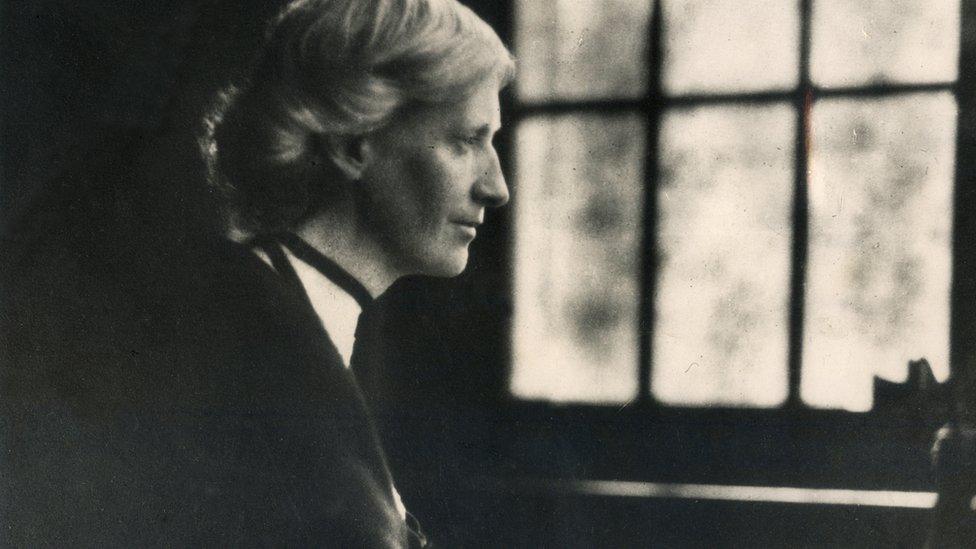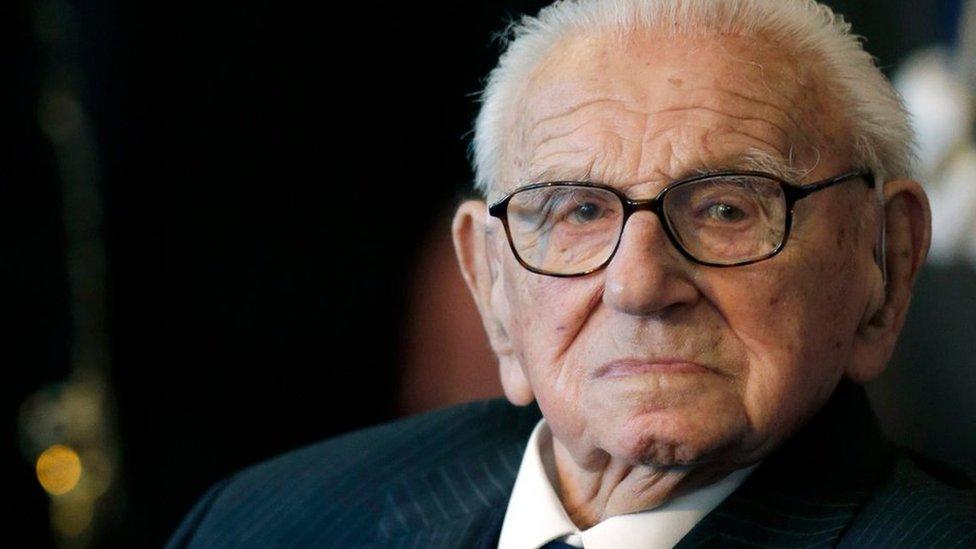Ellesmere sculpture honours children's rights landmark
- Published

Eglantyne Jebb wrote her guiding principles three years after co-founding Save the Children
A stone sculpture has been erected to mark 100 years since written guidelines set out the rights of children.
The principles highlighted by social reformer Eglantyne Jebb went on to become the foundation for the Geneva Declaration of the Rights of the Child.
The five foot (1.5m) tall carving will stand close to a lake near her birthplace in Ellesmere, Shropshire.
It was commissioned by a sculpture group in the town.
The Ellesmere Sculpture Initiative said the piece was part of a project to celebrate and commemorate the pioneering work of Jebb and her sister, Dorothy Buxton.
The pair co-founded Save the Children in 1919 to combat famine in mainland Europe at the end of the First World War.
The group also created an abstract sculpture trail in the Jebb Garden in Ellesmere, to remember the sisters' achievements.
It said the principles remained important, a century later, because of "all the terrible things currently happening in our troubled world".
The sculpture, carved from Howley Park York sandstone by Llansilin artist John Neilson, bears the words: "Mankind owes to the Child the best it has to give."
The sisters formed part of a five-point charter which was adopted by the League of Nations in 1924 and later enshrined in the United Nations Convention on the Rights of the Child, external.

Follow BBC West Midlands on Facebook, external, Twitter, external and Instagram, external. Send your story ideas to: newsonline.westmidlands@bbc.co.uk, external
Related topics
- Published21 November 2019

- Published7 June 2019

- Published18 May 2019

- Published15 March 2016
